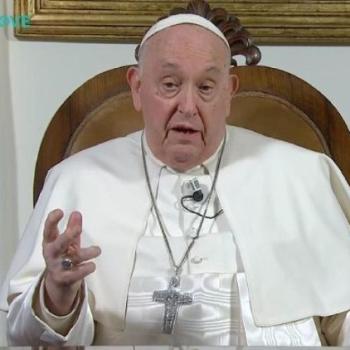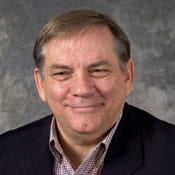Editors' Note: This article is part of the Patheos Public Square on Remembering the Dead: Ancestors, Rituals, Relics. Read other perspectives here.
No one has done as thorough a job as the historian Samuel Brown showing the degree to which early Mormonism was a response to the problem of death. The blurb for his book, In Heaven As It Is On Earth, says:
When approached from this perspective [namely through the lens of founder Joseph Smith Jr.'s complex, intimate, and conflicted relationship with death and dying] many of the unusual or striking aspects of earliest Mormonism begin to make sense, allowing outsiders and insiders a refreshing new look at a much-discussed but poorly understood religious tradition.
That is true not only of early Mormonism, but also of Mormonism today. Seen through the lens of a concern for death and the dead, many of our peculiar practices begin to make sense.
The Howard and Martha Coray notebook, a journal of sorts, records Joseph Smith (the first prophet of the LDS Church) saying in August of 1843:
There is a thought more dreadful than that of total annihilation That thought is the an assurance thought that we shall never again meet with those we loved here on earth . . . Well you lose a friend you come up in the resurection hoping to [meet] him again but find yourself separated from them to all eternity . . . this thought I say of being disappointed in meeting my friend in the resurection is to me more dreadful than of ceasing to suffer by cessation of being (The Words of Joseph Smith, Ehat & Cook, compilers, 239-40; original spelling, grammar, and emendations retained)
This is the heart of Mormon understanding: salvation is not singular. To be saved but alone would be worse than annihilation. Heaven can only be heaven if it is filled with those we love. To be in heaven is to be with those who have died before us.
As Richard Bushman pointed out in his Rough Stone Rolling, this emphasis on friendship and human relationship was central to Smith's understanding of human being and so also to his understanding of religion and salvation. And as that understanding developed, so too did the way that he spoke of being with friends and family eternally.
Smith had already preached (August 1839) that those who have come before us in the world, from Adam to the present, could not be made perfect without us (Ehat & Cook 10).
The author of Hebrews teaches that those who came before Christ could not be saved without those who lived as witnesses and beneficiaries of Jesus' life, death, and resurrection (Heb. 11:39-40). The perfection of ancient exemplars of faith came only when faith could be made perfect in Jesus. Though denied the full blessings of their faith while they were alive, they received those blessings when Christ completed his ministry.
Smith's idea was similar, and he used Hebrews 11:40 as a proof text. But Smith took the idea further. The perfection of those who came before included and went beyond the ministry of Jesus Christ in the spirit world. Joseph Smith's teaching extended Christ's perfecting work to the restoration of the gospel that God worked through Smith: the completion of the work of salvation begun with Adam, continued through the prophets of the Old Testament, and brought to its climax in Jesus' suffering, death, and resurrection was to be finished in the work done through Joseph Smith.
Smith envisioned that work as, among other things, the establishment of a heavenly kingdom on earth from which Christ will rule when he returns (D&C 29:11). But the kingdom that Smith envisioned was more than just the millennial kingdom. It was also the eternal kingdom of God. Friendship and family is essential before the Second Coming. It is at least, if not more, essential afterward, in the millennium. It is even more essential in the eternities.





